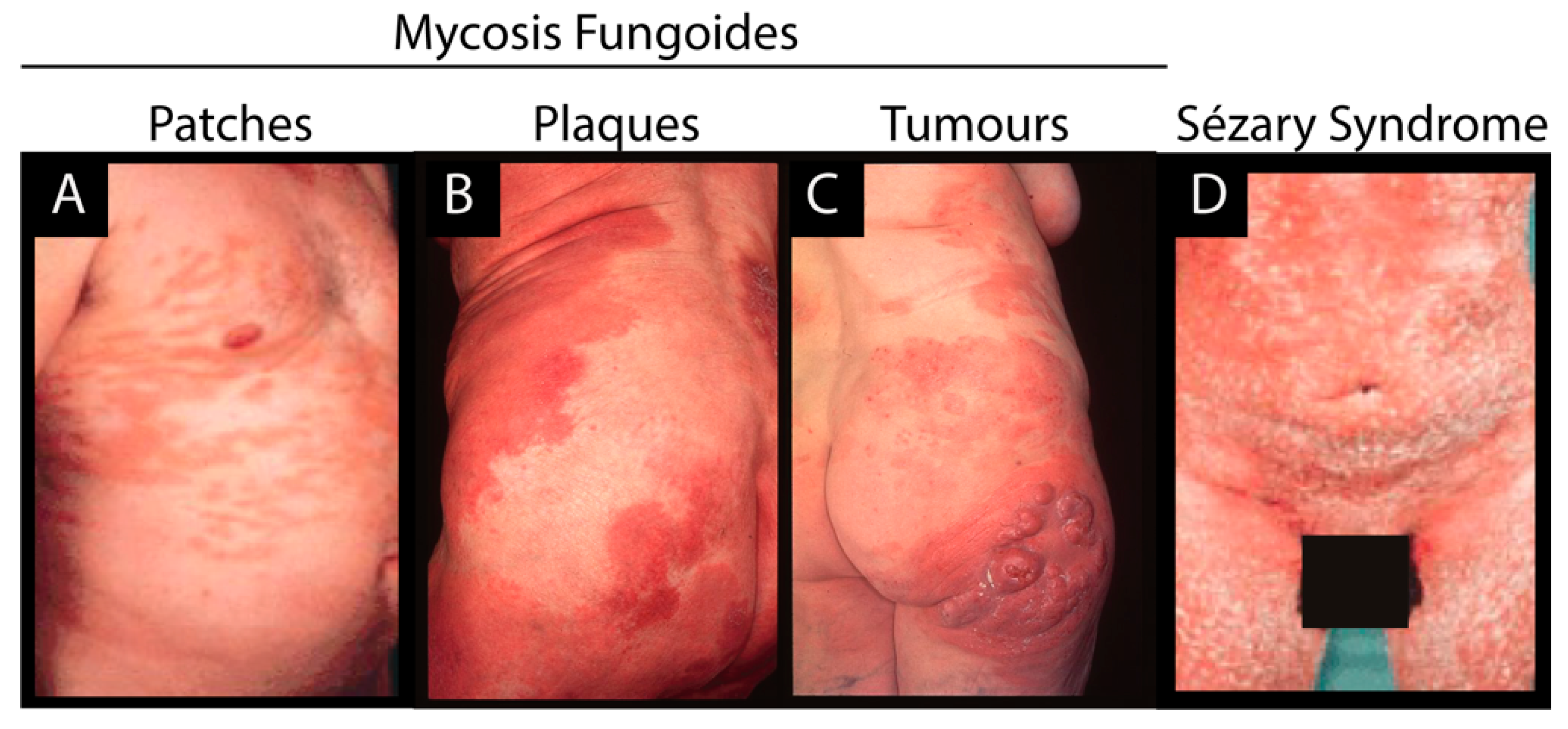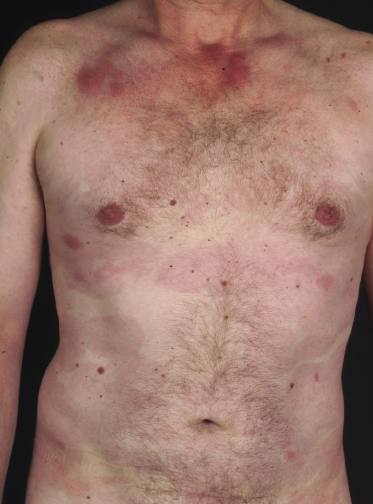


#Cutaneous tcel lymphoma series
A recent series of studies profiled the genomic landscape of CTCL. Likewise, no convincing evidence showing an etiologic role of infectious agents in CTCL has been provided, albeit infections may aggravate the disease. Demographic patterns in the incidence of CTCL have been reported, but no environmental triggers have yet been identified. The etiology of MF and SS remains an enigma. However, many characteristics of the malignant T cells change during disease progression, and there seems to be a relatively high degree of heterogeneity and plasticity within the malignant population.
#Cutaneous tcel lymphoma skin
Based on the expression of CCR7, L-selectin, and CD27, it has further been reported that the phenotype of the malignant T cells resembles that of skin resident effector memory T cells in MF and that of central memory T cells in SS. In low-grade MF, the malignant T cells also express CXC chemokine receptor 3 (CXCR3), which promotes their recruitment to the dermis and epidermis where the corresponding ligands (CXCL9, CXCL10, and CXCL11) are synthesized. The malignant T cells typically display the phenotype of CD4 + memory T lymphocytes and express skin-homing receptors such as cutaneous lymphocyte antigen (CLA), CC chemokine receptor 4 (CCR4), and CCR10.

Because MF and SS are the best studied forms of CTCL and collectively comprise the majority of cases, the term CTCL will in the following generally refer to these two clinical variants. The characteristics of SS include generalized erythroderma, lymphadenopathy, and peripheral blood involvement, classifying SS as an advanced clinical stage of CTCL. Sézary syndrome (SS) is a particular aggressive variant of CTCL that can arise de novo or, rarely, ensue after years of chronic MF. The risk of disease progression rises significantly as the disease advances highlighting that it becomes increasingly aggressive. There is a stage-dependent decrease in survival, and patients with late stages of CTCL have a median life expectancy of less than 4 years. In advanced disease, the malignant T cells can further disseminate to the lymphatic system, blood, bone marrow, and internal organs. 1b, c) and, eventually, overt tumors and generalized erythroderma may develop. For many patients, the disease never progresses beyond this stage, but for about one third of patients the skin lesions start to spread (Fig. 1a), typically exhibits an indolent behavior and a very favorable prognosis with normal life expectancy. Early disease, which is characterized by limited patches or plaques (Fig. Classically, MF presents as erythematous skin patches bearing strong resemblance to benign inflammatory dermatoses. Mycosis fungoides (MF) is the predominant clinical variant comprising 54–72 % of all cases. We further define the term “malignant inflammation” as a pro-tumorigenic inflammatory environment orchestrated by the tumor cells and discuss some of the mechanisms driving the development of malignant inflammation in CTCL.Ĭutaneous T-cell lymphomas (CTCL) are characterized by the presence of malignant T cells in chronically inflamed skin lesions. Here, we review the inflammatory changes associated with disease progression in CTCL and point to their wider relevance in other cancer contexts. Emerging evidence supports that the malignant T cells take control of the inflammatory environment, suppressing cellular immunity and anti-tumor responses while promoting a chronic inflammatory milieu that fuels their own expansion. This shift does not appear to be an epiphenomenon but rather a critical step in disease progression. The transition from early indolent to progressive and advanced disease is accompanied by a significant shift in the nature of the tumor-associated inflammation. Eventually, overt tumors develop and the malignant T cells may disseminate to the blood, lymph nodes, bone marrow, and visceral organs, often with a fatal outcome. For many patients, the disease never progresses beyond this stage, but in approximately one third of patients, the disease becomes progressive, and the skin lesions start to expand and evolve. Early disease presents as limited skin patches or plaques and exhibits an indolent behavior. Cutaneous T-cell lymphomas (CTCL) are characterized by the presence of chronically inflamed skin lesions containing malignant T cells.


 0 kommentar(er)
0 kommentar(er)
